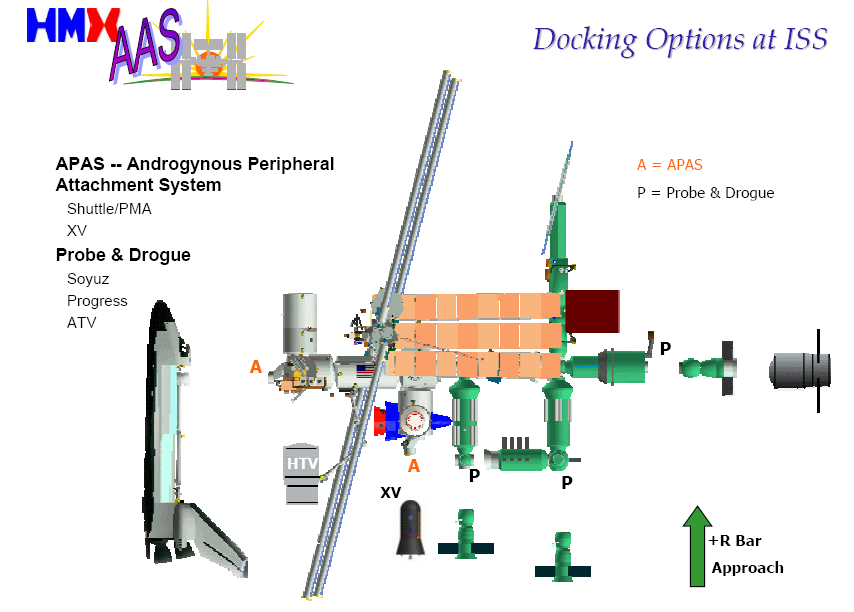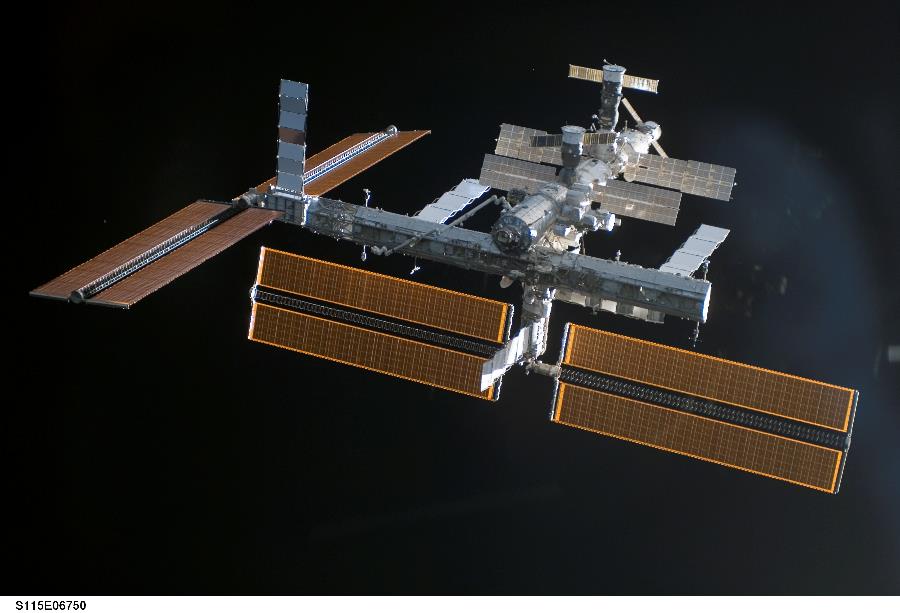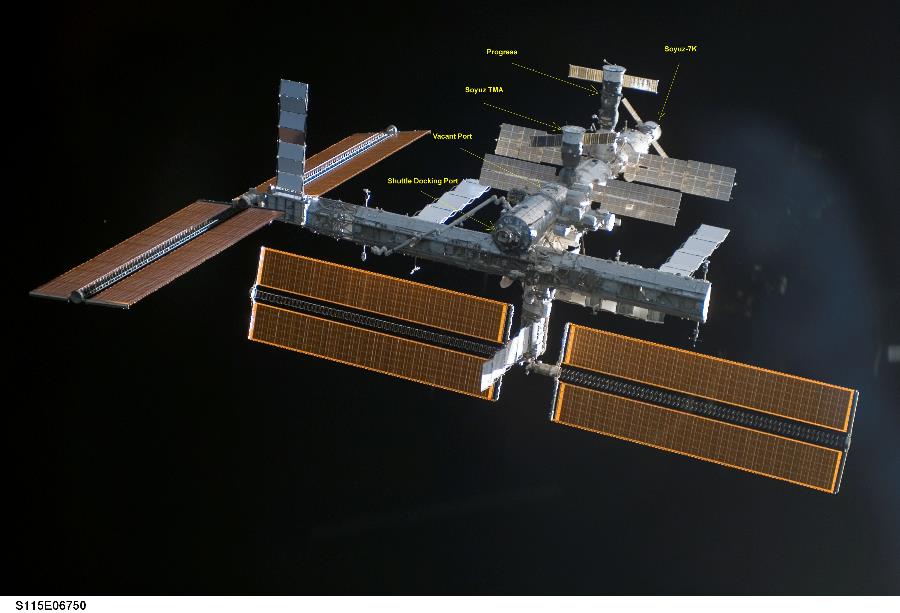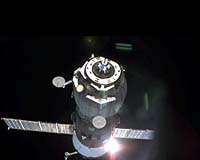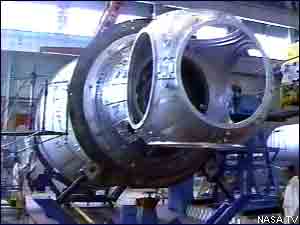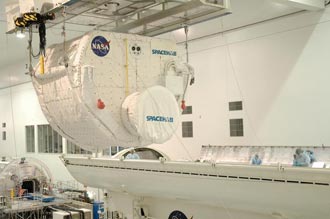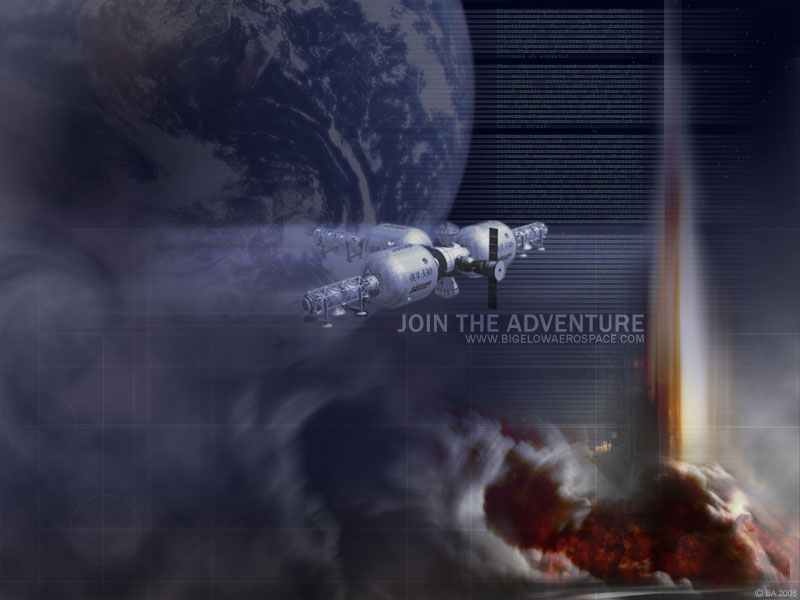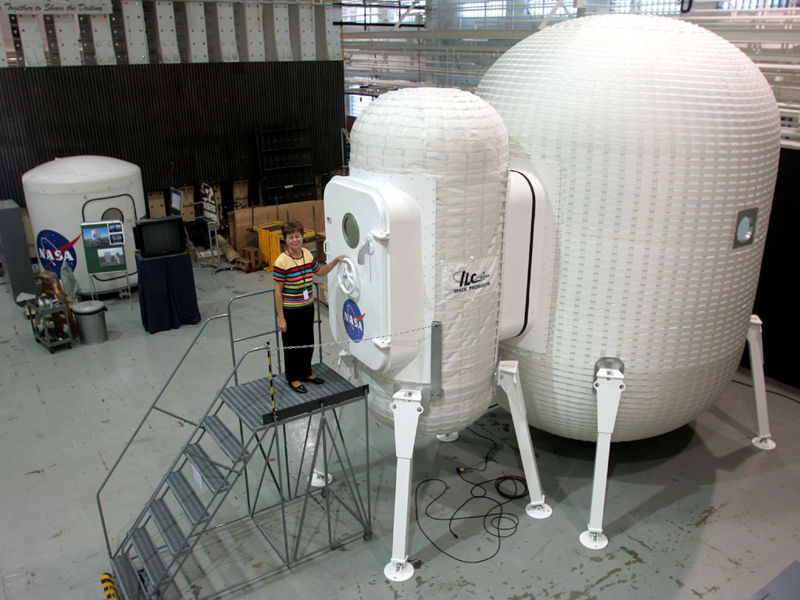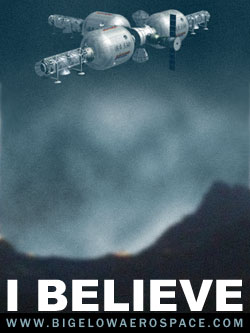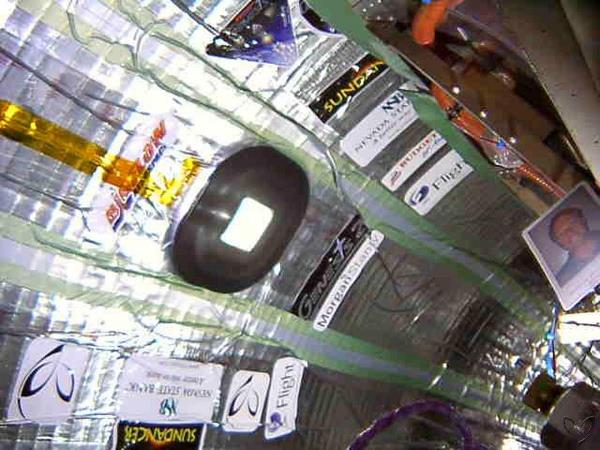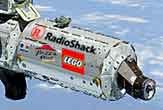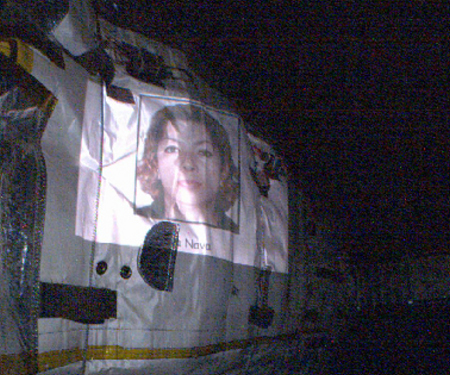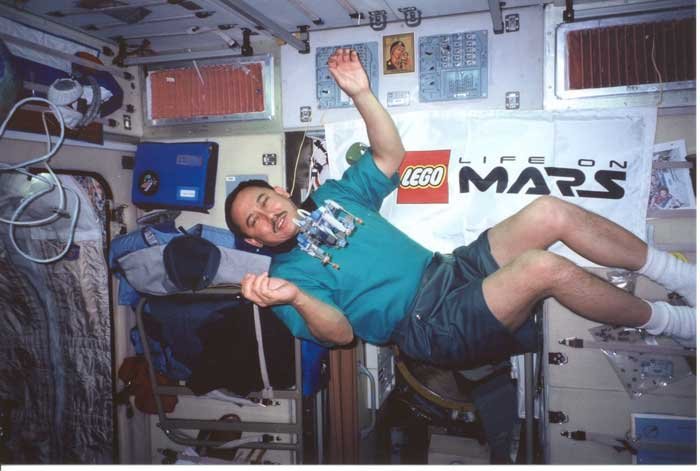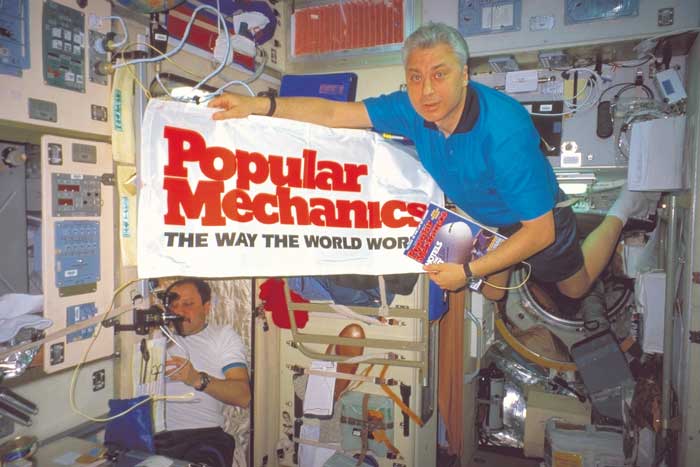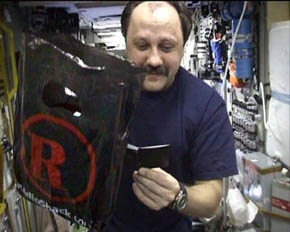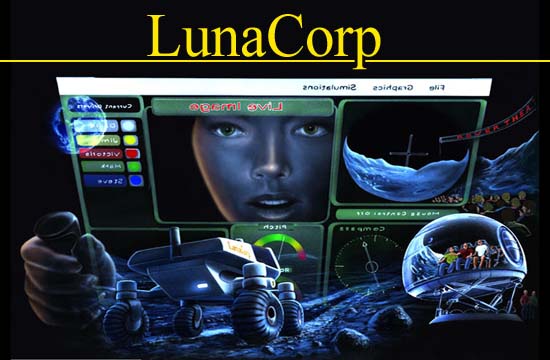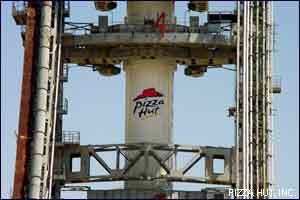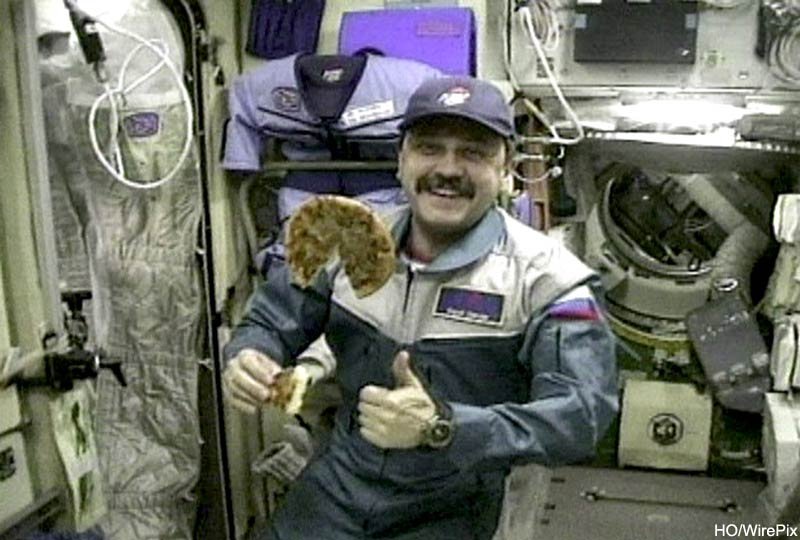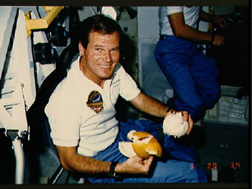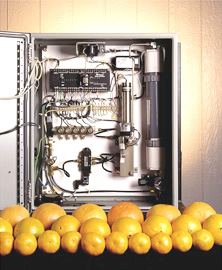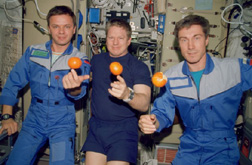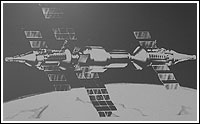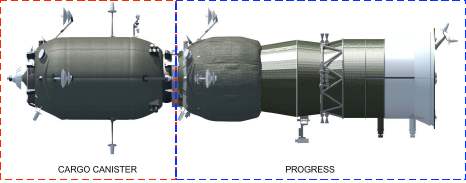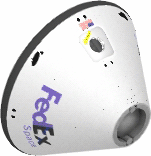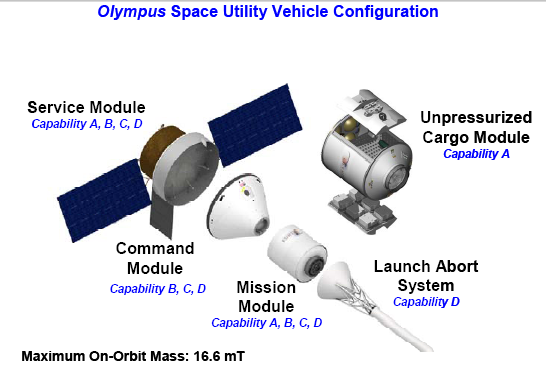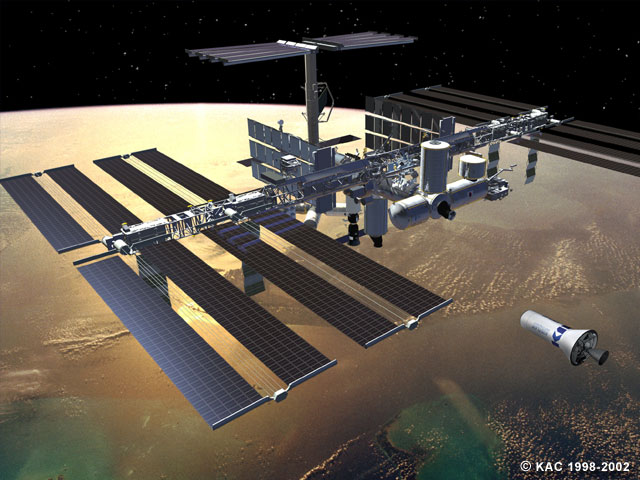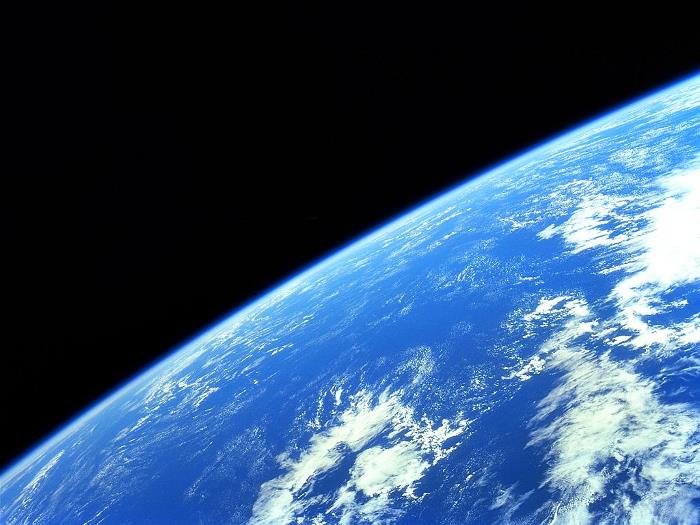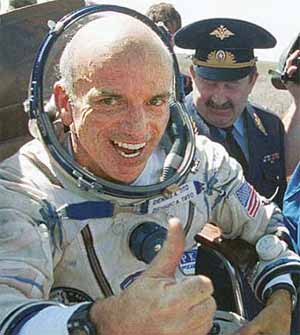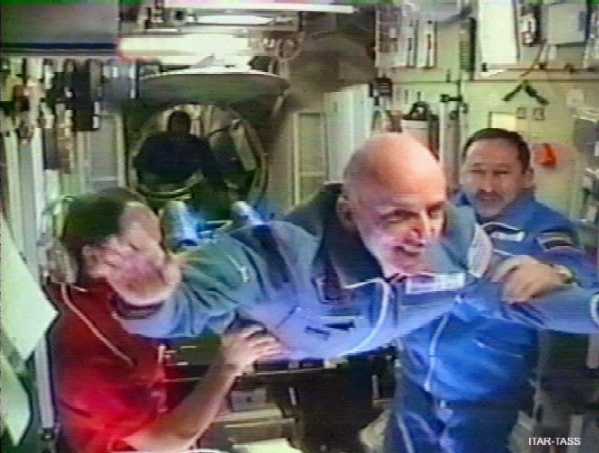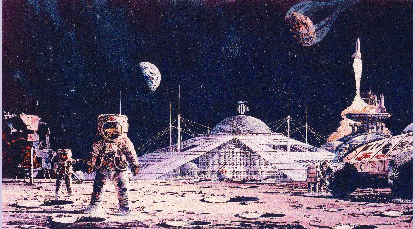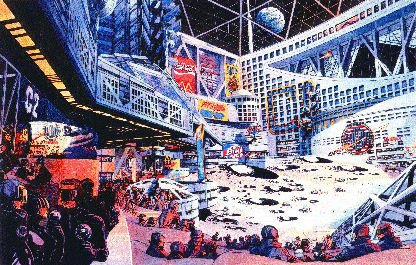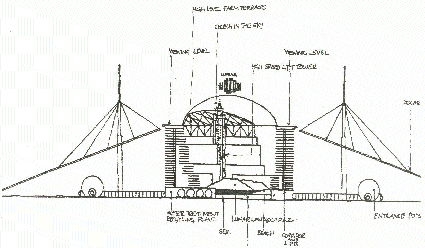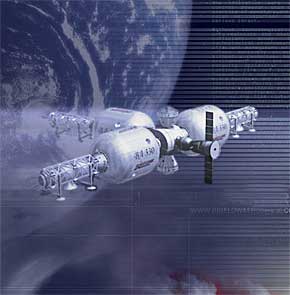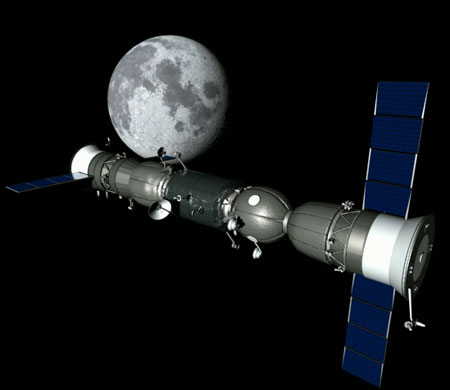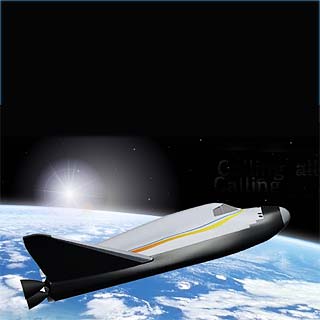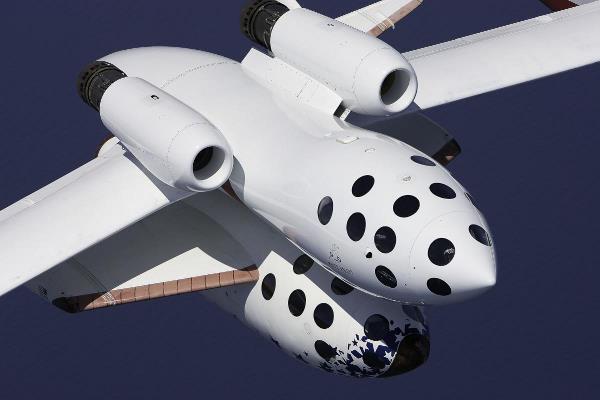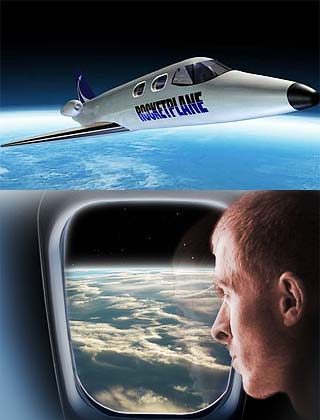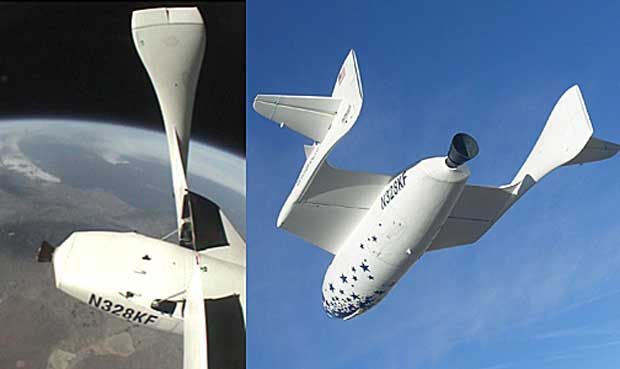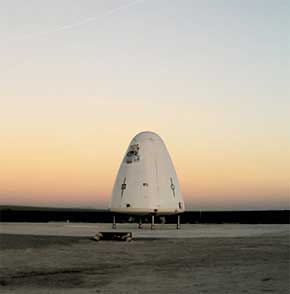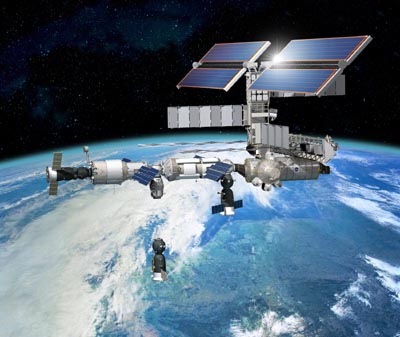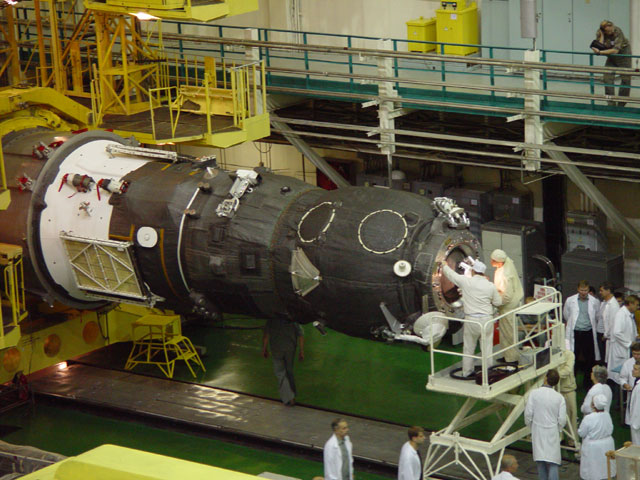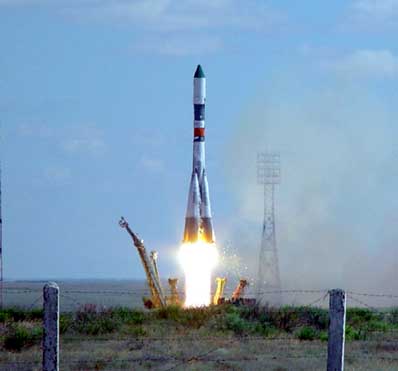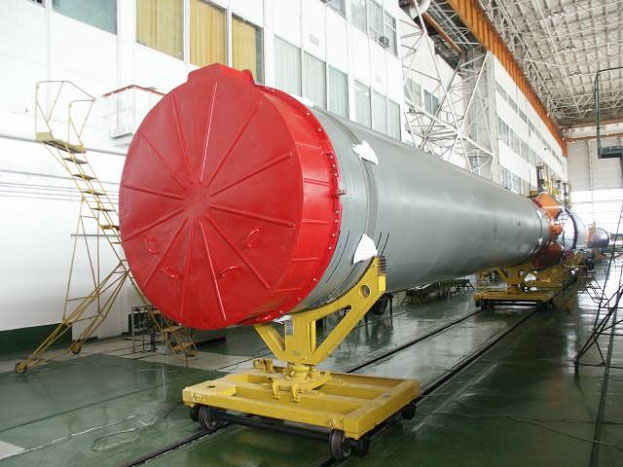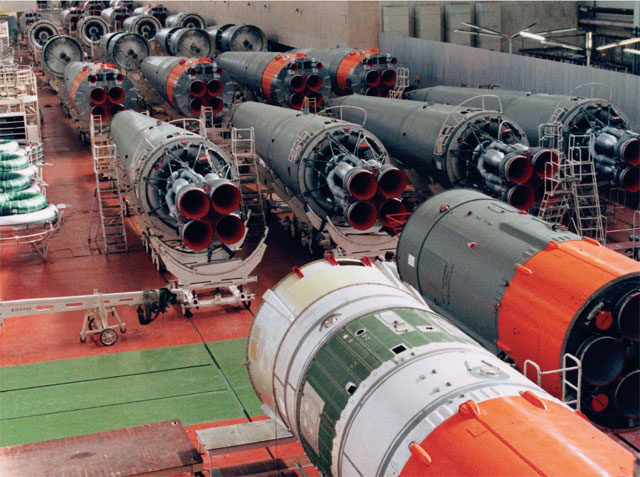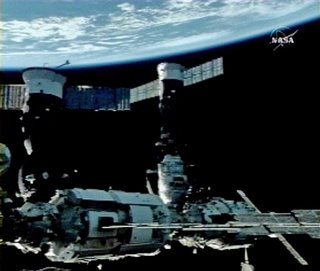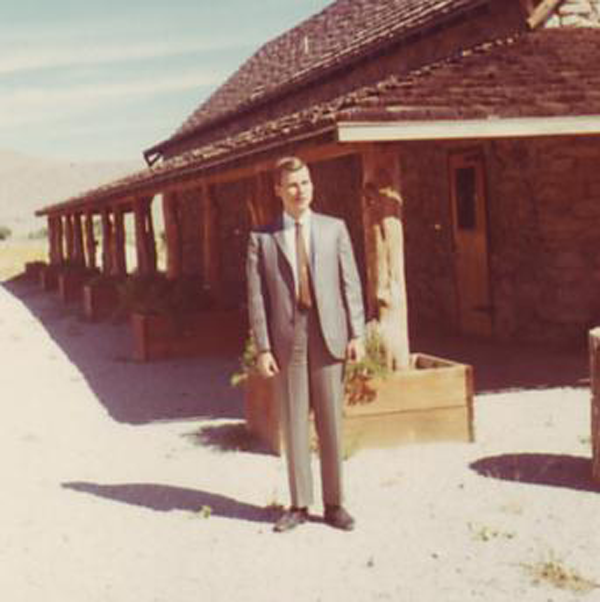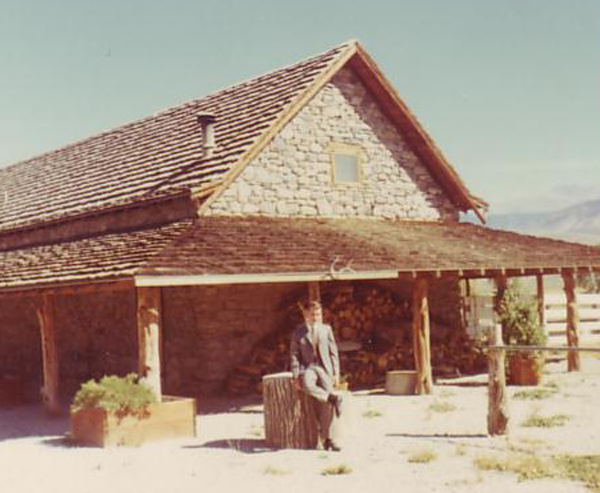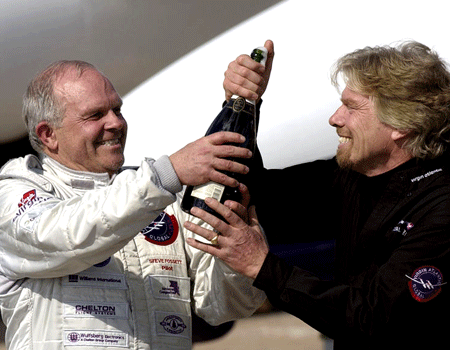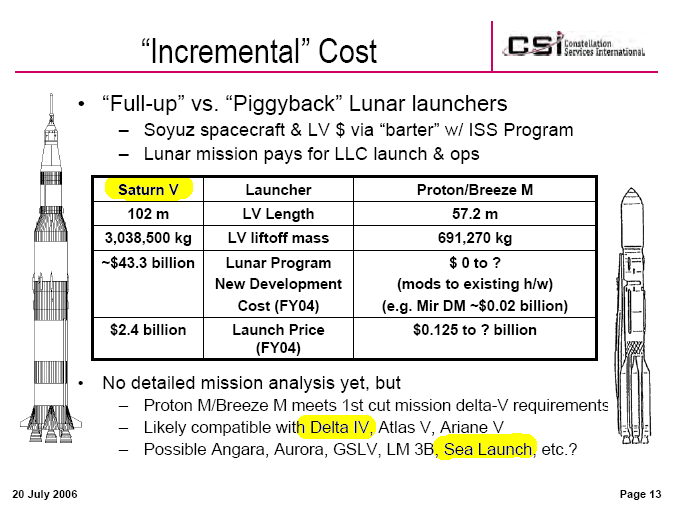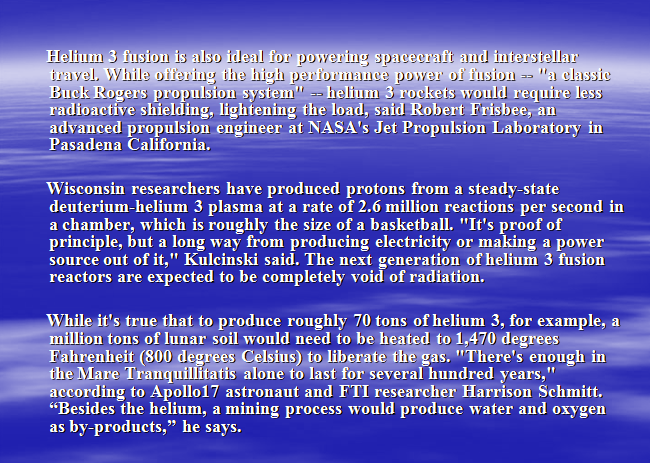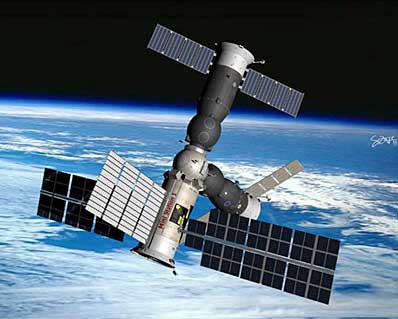|
INTERNATIONAL SPACE SUPERCENTER Shopping Mall |
||||||||||
| Someone asked the other day
in one of the threads at AboveTopSecret.com...
"But John, seriously, if there really were Secret Space Stations out there and bases and mines on the Moon and Mars, where the heck to people working there go to shop? Surely they don't make the trip back to Earth every time? and they must get pretty tired of packages space food?" Now that is a fair question... and a good one because no matter where humans go we are spoiled and will want the things of home... So we put together this presentation to try to answer that for you. But first we wish to clear up a little Myth that most Americans are not aware of... "How many parking slots does the ISS have?" |
||||||||||
|
.
Well, it would seem that there are quite a few. One for the Shuttle, a second APAS capable port for the new HMX-ASS craft and three "Probe and Drogue" couplings, the lower two being capable of multiple moorings. So parking while you are visiting to shop should not be a problem at all! "How do you get to it from Earth?" |
||||||||||
| Currently the only way to reach
the Shopping Center from Earth is via the Space Shuttle that NASA operates
from Cape Kennedy in Florida. However seating is very limited. You might
have a better change hitching a ride in Russia, but most of their ships
are robotic freight carriers, and tourist flights are expensive, currently
going at 20 million for a 10 day visit, so it may not be easy. There
are several private companies working on projects that are promising and
other foreign nations have space programs, but with little results for
passenger space.
On a recent Mission to the Shopping
Center... Space Shuttle Atlantis took the following photo...
Caption from NASA - S115-E-06750
(17 Sept. 2006) --- This view of the International Space Station, back
dropped against the blackness of space, was taken shortly after the Space
Shuttle Atlantis undocked from the orbital outpost at 7:50 a.m. CDT. The
unlinking completed six days, two hours and two minutes of joint operations
with the station crew. Atlantis left the station with a new, second pair
of 240 foot solar wings, attached to a new 17.5 ton section of truss with
batteries, electronics and a giant rotating joint. The new solar arrays
eventually will double the station's onboard power when their electrical
systems are brought online during the next shuttle flight, planned for
launch in December.
Below is a description of the
Vessels Currently docked. Click on both Images to get a larger view. A
Progress Cargo Ship, a Soyus-TMA and a Soyuz-7K. Shuttle Atlantis took
the photo. So here we have four vessels docked at the same time.
Attention!! May I have your Attention Please!! Progress Cargo Ship M-61 carrying Computer Equipment is currently docking with ISS at docking port 3 of the Russian Module Pirs. Off Loading crew please report to your station.... Ah! That would be the Progress M-61. It is a Automated cargo spacecraft carrying food, water, and fuel supplies for the crew, and equipment to repair onboard computers. Wait a minute... It has automatically docked with the global orbital station, mission control said. The cargo ship docked with ISS on schedule at 22:40 Moscow time (18:40 GMT) today Sunday August 05, 2007. It is delivering much needed additional equipment to fix the onboard laptops of the Russian segment, which crashed on June 11. The Russian crew, Fyodor Yurchikhin and Oleg Kotov, had temporarily repaired the damage but extra equipment was required. This Progress shipment also delivered equipment to conduct space experiments as part of the Japanese program. The vehicle will delivered more than 2.5 tons of cargoes. They encompass oxygen, water and food supplies, propellant, consumables, science hardware and equipment, including 459 kg of equipment for the US Segment. Now that Progress M-61 has arrived, currently docking at compartment module Pirs we have transport vehicles Soyuz TMA-10, Progress M-60 and Progress M-61 cargo transport vehicles. Progress M-59 cargo transport vehicle operating as part of the station on August 1, 2007 was undocked from Pirs module and de-orbited into the Pacific Ocean. The unburned vehicle structural elements landed at 23:28.
This just in from Houston TX (JSC) Aug 05, 2007 The ISS Progress 26 (P26) is on course to arrive at the ISS just about on time, but the space shuttle Endeavor is going to be a little later than planned. The arrival of the new Progress scheduled for about 2 40 p.m. EDT. Wow! Its going to get real busy around here next few days what with the Soyuz TMA-10, Progress M-60 and Progress M-61 already docked, and the Progress P29 and STS Endeavor on the way. That is the most I have seen berthed at one time since my posting... They are bringing in a lot of material for the new additions. We sure need the space if this schedule is going to continue. Lets continue the tour...
"Essentially an empty shell
of metal in 1995, the Zvezda service module takes shape at its factory
near Moscow. The open holes at front will become docking ports." - Jack
Arneson (5 Docking Ports in 1 Module)
Progress M-61 Cargo Ship With Computer Equipment Docks With ISS Progress P-26 To Dock Sunday At Station NASA
STS118 Mission Endeavor - Launched Late Aug 8, 2007
SPACEHAB Ready for Last Mission The single module bolted into
Endeavor's cargo bay will continue that work by carrying some 5,800
pounds of equipment and supplies to the ISS,
according to Don Moore, director of ground operations at the company's
Cape Canaveral, Fla., facility. NASA could still enlist a pressurized SPACEHAB
module for a shuttle supply run in the future, but the flight manifest
currently leaves that task to the Italian built multi-purpose logistics
modules.
|
||||||||||
|
. Pardon our dust but we have some major expansion work going on to better serve your shopping needs. If you look out that portal on the left, you will see some major additions "Atlantis left the station with a new, second pair of 240 foot solar wings, attached to a new 17.5 ton section of truss with batteries, electronics and a giant rotating joint. The new solar arrays eventually will double the station's onboard power when their electrical systems are brought online during the next shuttle flight, planned for launch in December." This expansion is ongoing as the needs increase. "What kind of accommodations are available?" |
||||||||||
|
Hotels and Habitats .
One thing we get a lot of requests for is better accommodations. Admittedly the Rooms available in the Shopping Complex are small and there are few available. However if you look out the other portal, you will see Phase Two is completed on the Bigelow Aerospace "Project Genesis". Robert Bigelow is a Vegas entrepreneur that has designed and launched modules for an Inflatable Hotel in Space. Only someone from Vegas could think up such a plan... (Click on the image above for a larger version. More wall paper available at Bigelow Aerospace). The project was launched with the help of the Russians and Space Suits will be provided by Zvezda For those seeking a future career you can pick up a brochure in the front lobby. They are currently hiring all positions. For those of you who will be
leaving here and going on to the Moon and Mars... you can make your reservations
for the Habitats at the front desk... They are very spacious and clean
well lit rooms. Instructions and emergency kits on repairing leaks are
also provided.
These units are available either
as individual "cabins" for your privacy, or you can choose any of the established
complexes near the mining centers. The ones below are near Tsiolkovsky
Crater on the Farside. These are very well known resorts and have been
active since before the Apollo Mission. The images below were photographed
by Apollo 15. Unfortunately those expensive cameras they had were out of
focus that day...
|
||||||||||
|
.
One of the ways the Shopping
Center makes money to support our facilities is the same way you do back
on Earth... namely ADVERTISING... We have many options available.. Posters
on our walls is the least expensive of the options and there is a lot of
wall space on the station. Posters tend to break up the monotony of the
metal walls and remind us of home. Robert Bigelow has a very interesting
poster, taken from what inspired him. I am sure you have seen the message
before... Look to the wall above your head...
Bigelow Aerospace also offers
you the opportunity to "Fly
Your Stuff" Click on the link or image above and find out how. And
don't worry, we have lots of "space" up here.
There is a lot of traffic up here, what with the cargo flights to the stations and the mining operations, flights to the outer planets, the "Visitors" and not to forget the Military. Its a wonder we don't get more collisions. If you wish to reach traffic on its way to the the Moon , Mars and the outer planets that don't normal stop at "this" station there are two options we have available... We have banner space available on the outside of the station. Several companies have already taken advantage of this space very effectively through our sponsorship opportunities. The second option, Bigelow Aerospace has just completed their new "electronic billboard", again only someone from Vegas would conceive this... Hello from Genesis II
Lego Creates New Toy
Lego has just released their new toy in their "Life on Mar" Series. Here Cosmonaut and Soyuz Commander Talgat Musabayev tests one out in Zero G. I am told these are very popular with the kids on Mars. "The Lego Company, being active
in the non space area, in co-operation with Intospace, a space industry
service provider, developed a space education project aimed at developing,
launching and operating a Lego Robot on the Space Station. This series
is a highly sophisticated assembly set with programmable microchips and
advanced reaction systems such as light-, touch or rotational sensors.
The space environment of the ISS was perceived as the right scenario for
this hi-tech project."
PEGASUS NOTE: This Lego Robot does not sound like a toy! In fact the Smithsonian Report above states - "Therefore a public competition was announced to create attention offering interested people to participate in developing a robot that will be in the condition to support the ISS crew during their daily routine work." You probably picked up a copy of popular Mechanics on your trip up here or while waiting it the lobby for the tour. Popular Mechanics has long been showing the world what's going on in Space. It's only fitting that they are a sponsor as well. You can purchase copies in the Commissary Popular Mechanics
took Popular Mechanics to new heights - as it were - on his recent visit to the station. Another opportunity available to advertising agencies is the shooting of commercials for television back on Earth. We recently did a Father's Day presentation for Radio Shack... Radio Shack Shoots Commercial
in Space
Radio Shack delivers Father's
Day gift in space
"Fort Worth, Texas - April 30, 2001 - The Russian cosmonauts who ferried up a fresh lifeboat to the International Space Station are delivering surprise Father's Day gifts for American astronaut James Voss and Russian cosmonaut Yuri Usachev. Radio Shack is sending them talking picture frames with photos and 10 second voice messages from their daughters. Today's Soyuz docking is the last opportunity to have a crew deliver Father's Day gifts before Sunday, June 17. The visiting Soyuz cosmonaut crew of Talgat Musabayev and Yuri Baturin, who blasted off from Baikonur, Kazakhstan, on April 28, carried both frames up to the International Space Station." - Source Luna Corp. Radio
Shack First To Air TV Spot Filmed On The International Space Station
Shooting on Location: Outer Space
"Luna Corp. created several projects that engaged the public's interest in space, and that were aimed at enabling direct participation in space exploration. It was founded in 1989 and was dissolved in 2003 after working with NASA, the Russian space agency and commercial sponsors on visionary projects. The company's former president, David Gump, is now CEO of Transformational Space Corp. Luna Corp. was the first company to successfully arrange for a television commercial to be shot on the International Space Station. Radio Shack aired its space station commercial starting on May 30, 2001, and bought additional network time leading up to Father's Day because it drew such a strong positive response from audiences. The following is the news release issued by Radio Shack and Luna Corp. announcing the event." - Source Luna Corp. Many of you are probably getting hungry by now... and I know most of you are interested in just what we eat up here... I know Earth TV tends to show you the pre packaged 'sterile' food pouches. We always get a kick out of those reports... we never could figure out why its such a big secret on Earth... So lets take a few minutes to finish with the commercialization of space and we will give you a tour of the 'pantry'... then stop for a bite to eat at the commissary Pizza Hut Delivers in Space
that launched the Zvezda service module; part of Russia's commercialization of its cash strapped space program
Capitalism Wins: Russia Takes
the Lead in Space Age Advertising
It's also the beginning of a new space race, one in which the Russians have once again taken an early lead over their American counterparts. In what amounts to an orbital battle of "me first" product placement, advertisers in the U.S. and Europe are scrambling to get onboard Space Station Alpha, which is being raised some 240 miles (384 kilometers) above Earth. In may, four major corporations -- Radio Shack, Popular Mechanics, The LEGO Company and Pizza Hut -- paid to have cosmonauts promote consumer goods aboard the outpost. Meanwhile on Earth, U.S. federal government regulations have relegated NASA to the sidelines as the cash strapped Russians are rocketing off into a new age of high flying advertising, marketing and promotion. Said Jay McGill, publisher of Popular Mechanics: "Anything can be done for rubles." Source Pizza Hut Celebrates Successful Delivery to Space
"Pizza Hut announced Tuesday that "the world's first space consumable pizza" had safely arrived on the International Space Station (ISS), where it was eaten by the astronauts living onboard. "Wherever there is life, there will be Pizza Hut pizza," the Dallas based pizza chain's chief marketing officer Randy Gier said in a statement. "If space tourism is going to be a reality, Pizza Hut pizza will make the trip even better." Source "Despite the unusual delivery address, the pizza, called "the culmination of nearly a year of collaboration" between the company and Russian nutritionists, largely conformed to the familiar recipe served up by some 12,000 Pizza Hut restaurants worldwide -- crust, tomato sauce and cheese. However, the vacuum sealed
space pizza was topped with salami rather than the traditional pepperoni.
"Researchers found that pepperoni did not withstand the 60 day testing
process," a company release rather cryptically stated." Source
Pizza Hut Puts Pie in the Sky with Rocket Logo Capitalism Wins: Russia Takes the Lead in Space Age Advertising "The US restaurant chain Pizza Hut has announced that it has become the first company in the world to deliver a pizza to outer space. The company is no stranger to making deliveries in bizarre circumstances - in 1991 they delivered pizzas to Boris Yeltsin and his supporters, who had prevailed over an attempted coup. When food supplies dwindled in the Russian Parliament building, Mr. Yeltsin called Pizza Hut delivery. The publicity stunt however, may antagonize Russia's American counterparts on the ISS." BBC News: Pizza sets new delivery record Pizza Hut now holds the record for the first pizza delivered to space, the fastest delivery, the furthest delivery and the highest delivery. Speaking of which, I believe it is time to take a break and have something to eat. Follow me.... "That brings up a good point, what's the food like up here?" |
||||||||||
|
.
You have probably all seen the Discovery Channel and other reports talking about the food we eat out here. Foil pouches and the like. There have been several reasons to "disguise" this from the public, reasons I cannot reveal here, and quite frankly, its not my area. However now that you are up here on your way to the Moon or other destinations we can show you a little... In the last shipment alone we received over a half ton of fresh fruits and vegetables. They don't keep long here so we need to move them 'down the line' quickly, but as you can see by the crew, oranges and grapefruits are a big hit up here. "I watched the Hi-Def 30 minute broadcast of an "interview" with one of the crew members of the ISS on Discovery HD channel on 08/15/07. Ten minutes of it was on what they eat. No mention of fresh fruit or vegetables. The Commander showed dehydrated food packets, fruit juice packets and everything was in packets. Not a banana, apple or veggie in sight or even mentioned. - Jack Our main supplies come through Russia. And just like in the Advertising Department you saw mainly Russian activity, this is also true of the Cargo Shipments. NASA has long had a policy of not endorsing products because they are funded by the government and tax dollars. You can review some of their policies in the library HERE It has also been NASA's policy not to show the public too much... few in America even realize that Russia runs supply ships up here even though they simply need to look at the photos of ISS on NASA images and see the ships docked. It is curious however to note that while they do not cover the food on mainstream TV, they do show the school children back on Earth what we really eat. Perhaps they wish to prepare the next generation and show them Life is not as harsh out here as they have been told... The supplies are brought up by the Progress Series. Just as an example... Progress M-59... ...is a Russian automatic cargo carrier that was launched by a Soyuz rocket from Baikonur at 02:12 UT on 18 January 2007, toward the International Space Station. It carried 2.5 tons of food, fuel, water and equipment and docked with the PIRS module of the ISS at 03:03 UT on 20 January. [2] Progress M-60... ...is a Russian automatic cargo carrier that was launched by a Soyuz-U rocket from Baikonur at 03:25 UT on 12 May 2007. It carried 45 kg of air, 419 kg of water, and 1.4 tons of dry cargo, 241 kg of fresh fruits and vegetables, 136 kg of medical equipment. [2] Now for those of you not using the metric system, that is over 500 pounds of fresh fruits and vegetables. So you can see we are not suffering for lack of good food, despite what they tell folks on TV back on Earth. In the NASA publications for the school children 9-12 you will see that they state... "Currently, the Russian Space Agency provides half of the food consumed on the ISS, with NASA supplying the other half." [1] Lets go into the food storage area and I will show you some of the cargo manifests... "Fresh fruits and vegetables (apples, bananas and carrot and celery sticks) were first flown on STS-6 in April 1983. Oranges, pears, nectarines, grapefruit and jalapeno peppers have also flown occasionally." [1] "Fresh fruits such as apples, bananas, and oranges, and fresh vegetables such as carrots and celery sticks are loaded onto the Space Shuttle less than 24 hours before launch in a special fresh food locker, which also contains such things as tortillas, fresh bread, and breakfast rolls. During space flight, fresh fruits and vegetables have a short shelf life, and many must be consumed within the first 7 days of flight. Carrots and celery sticks are the most perishable items in the fresh food locker and are recommended to be consumed within the first 2 days of flight." [3] "The Russians send onions, garlic and tomatoes with each Progress shipment to the International Space Station (ISS). ISS crew members report that the fresh fruits and vegetables from Shuttle and Progress add variety to their diet and increase crew morale." [1] Now as you can see on the shelves, we do get tons of food in dry packages and other containers. The Russians still prefer the old style tin cans, requiring a can opener. The Service Module that contains the ISS galley is provided by Russia and is designed to accommodate Russian food packages. The Russian galley dining table has slots for heating foods that are sized to fit both can sizes, tubes and the bread packages. [1] "Cultural differences between the two food systems include the lack of any typical American breakfast foods. There is also more fish on the Russian menu. Some of their breakfast items include perch, both pickled and spiced, and fox berry juice, a mixture of wild cranberry and buckwheat gruel. Several thermostabilized and dehydrated cottage cheese items appear in the menu, mostly with fruit. And, of course, we cannot have Russian food without borsch, a soup made of beets." [1] Fortunately for crew members, the pantry is well stocked during missions. Due to American and Russian astronauts sharing living space aboard the ISS, NASA provides half the food supply, and the Russian Space Agency furnishes the other half. Entrees such as beefsteak, chicken teriyaki, scrambled eggs, and beef stroganoff with noodles make up the NASA menu, while the Russian ration includes chicken and rice, fish, ham omelets, and prune omelets. Both menus also feature an assortment of fruits, vegetables, and snacks. [4] "New supplies of fresh food are one of the most prized deliveries for astronauts brought to the Station either by the Space Shuttle or by the unmanned Russian Progress supply ship. Astronaut Whitson said that when a Progress supply ship arrived after she had been in orbit for months, “Fresh fruit and tomatoes seemed like a fantasy… Tomatoes have never tasted so succulent and apples so sweet!” [3] "Even when fresh fruits and vegetables are not available on the Space Shuttle or Space Station, astronauts have them available in other forms. Things such as applesauce, fruit cocktail, dried fruits, peanuts, and fruit juices have a much longer shelf life, and will last throughout a long Space Station stay." [2] "Bananas and oranges became less popular over time because of the odor they produce. The fresh fruits and vegetables are loaded on the spacecraft 16 to 24 hours before launch. The odor permeates the spacecraft. Upon arrival in micro gravity, some crew members may become nauseated and then associate the odor of the fruits and vegetables with the nausea." [1] "The in orbit shelf life is two to three days for most fresh fruit and vegetable items because there is no refrigeration." [1] So you can see by the above statements that it is imperative
that the fruits and vegetables are redistributed rapidly. Consider the
logistics of moving a half a ton through the 'network', and remember that
that is merely one shipment, representing half the volume of food that
passes through here from one shipment. And that's only the fresh goods.
There are medical supplies, electronic equipment and many other items that
move through here. It keeps the staff very busy...
1) Fresh
Fruits and Vegetables in Space - 05.13.04
UPDATE Re: "Raiding the Cosmic
Pantry"
PEGASUS NOTE: We found the above page "Raiding the Cosmic Pantry" with the photos of the oranges and grapefruits in google cache and saved a copy. Below is Jack Arneson's observation OK, we have NASA Shuttle reports
on Fruits & Vegetables that say carrots and celery (Ugh), have to be
eaten in two days or they will spoil
Where is the over 500 lb. of F&V? Must be in here on the Russian Space Station in a refrigerator. - Jack Arneson
|
||||||||||
| UPDATE: June 01, 2008
See: Secret Astronauts ASTROSPIES
|
||||||||||
| "Do they have a post office up here, can they get packages from home?" | ||||||||||
| At the moment the US Post Office
does not deliver to Space. Most of the personal packages are brought up
in the cargo transports or the shuttle... as well as the high tech equipment...
Progress M-59
Progress M-61
Progress M-60
NASA STS (Space Transport System)
Shuttles
Most of the Cargo we get delivered comes by the way of Russia in the Progress automated ships, but several Private companies are also involved. There is a lot of material coming through here. CSI has been under contract with us since 2002 with their LEO Express (SM) Space Cargo System, an innovative, patented method for resupplying space stations using existing technology. Currently they are using Progress ships, but their space tugs are a valuable asset for us. Another company is Rocketplane Kistler, launching out of Woomera, Australia But from time to time when we need something in a hurry, we call FedEx...
Constellation Services International, Inc. (CSI) "NASA's Alternate Access to Station project — part of NASA's Space Launch Initiative — awarded four contracts on July 12, 2002 to expand options beyond today's capability for delivering supplies to the International Space Station. These awards, with a combined value of $10.8 million, will cover 12 months of work." - NASA News Release 07/12/02 "Constellation Services International, Inc. (CSI) is an entrepreneurial orbital human space flight services company that is currently focused on cargo logistics to low Earth orbit (LEO) space stations. CSI is developing the LEO Express (SM) Space Cargo System, an innovative, patented method for re-supplying space stations using existing technology." "The sixteen partners in the International Space Station (ISS) project currently spend well over $1 billion per year to resupply ISS. NASA's budget for ISS crew and cargo services is scheduled to grow to approximately $500 million per year after the Space Shuttle is retired in 2010. Meanwhile, private ventures are planning private space stations which will need low cost economical resupply." - Source "CSI's patented service "disaggregates" the space logistics supply chain into an orbital space tug and a standardized cargo container. Since the launch vehicle only transports the cargo container, and not the entire spacecraft, the CSI service delivers more cargo to orbit for any given launch vehicle . If one launch vehicle becomes unavailable because of technical problems, the standardized container can easily be launched on other launch vehicles." - Source "CSI's LEO Express (SM) system can use many spacecraft as orbital space tugs.The earliest tug the system can use is the existing Progress spacecraft which is already certified for ISS operations. Over time as the Crew Exploration Vehicle, or other spacecraft, become certified for ISS operations they also might be converted to a reusable orbital tug." - Source CSI is a Delaware corporation,
founded in 1998. To reach us:
Fed Ex
Andrews Space, Inc. Olympus
Commercial Orbital Transportation System
Andrews Space, Inc. Olympus Commercial Orbital Transportation System Rocketplane Kistler
Contract: 2008
We are very pleased to announce that we have teamed with Rocketplane Ltd Inc. of Oklahoma and will continue operations as Rocketplane Kistler (RPK). We are the developer of the K-1 fully reusable aerospace vehicle, designed to deliver payloads to orbit and provide a low cost alternative to single use launch vehicles. The K-1 is fast becoming the industry leader in reliable, low cost provider of launch services for commercial, civil, and military payloads destined for Low Earth Orbit (LEO), Medium Earth Orbit (MEO) and Geosynchronous Earth Orbit (GEO), as well as to and from the International Space Station (ISS). Orbital flight tests and commercial operations will be conducted from RPK’s commercial spaceport at Woomera, Australia, and performed by Kistler Woomera and Spaceport Woomera, wholly owned Australian subsidiaries. An additional commercial spaceport is planned within the USA. - Rocketplane Kistler RPK Wins $207 Million Award
to Demonstrate International Space Station Servicing
"What about Tourism? Are there any opportunities for ordinary visitors?" |
||||||||||
|
.
Look out the portal on the left... the view you see of the curvature of the Earth seen from orbit provides one of the main attractions for tourists paying to go into space. Tourism is certainly on the Horizon, but current trips to Luna and beyond are only for those with clearance. There is too much risk of exposing operations. There are many private companies offering low level flights, but they are in the $200,000.00 plus range for a few minutes in space... so quite out of the reach of common travelers. Our good friends in the Russian sector offer the occasional opportunity for an 8 to 10 day stay here on this station.. but it seems they have discovered the benefits of capitalism... price tag for one of those excursions is 20 million. But NASA is annoyed with our friends... seems they are not keen on the idea of tourists up here. I am not sure why they feel this way, after all they are supposed to be a publicly funded organization. Well that's the end of the tour for today. I hope you enjoyed it. Back in the lobby area while you await your transports you can browse through some literature on the various vacation packages and tour flights currently available. Also there is a short film for those interested about the Progress Automated Cargo Vessels that support operations out here in space. Many will be surprised as to the number of support vehicles we have. Thank you and have a safe journey...
Tito's Soyuz Crew Says ISS
Visit Less Cordial than First Reported
"Dennis Tito received a frosty welcome from the American crew aboard the International Space Station (ISS) during his sojourn in space, according to his crew members at a post landing briefing held Tuesday in Star City, Russia. "Having entered the station, we immediately felt that the U.S. crew members had been instructed to keep their distance from Dennis, and they followed this instruction," Soyuz commander Talgat Musabayev said at the event, held at Russia's cosmonaut training center." [1] Source "Tito and others reported that the greeting from the Americans aboard the ISS were less than cordial and made for a somewhat tense stay while on the ISS." [2] "Nasa objected strongly when last month American space tourist Dennis Tito spent six days on the ISS, having paid a fee of $20m (£14m) to the Russian space programme." [3] "Unfortunately, some of Mir's good traditions are not observed onboard the ISS," remarked flight engineer Yuri Baturin. "When visiting crews docked to Mir, the station main crews had always asked the visitors what they would like to have for lunch or dinner, even before the hatches separating the station from Soyuz were opened. When newcomers entered the Russian station, warm food had already been waiting for them." According to Baturin, he, Musabayev and Tito had to wait for three hours after entering the ISS for a meal. "Its too bad that even Yuri Usachev, Russian commander of the ISS, had apparently given up his traditional Russian hospitality to observe the U.S. developed rules and procedures," said Baturin. Baturin and Musabayev took the lack of traditional welcoming bread and salt onboard the station, as one of the most eloquent signs of U.S. dominance in the outpost. "[1] "In conjunction with the Federal Space Agency of the Russian Federation and Rocket and Space Corporation Energia, Space Adventures facilitated the flights for the world's first private space explorers: Dennis Tito, Mark Shuttleworth, Gregory Olsen, Anousheh Ansari and Charles Simonyi. The first three participants paid in excess of $20 million (USD) each for their 10 day visit to the ISS. NASA Public Affairs has used the term Space flight Participant to designate space tourists. Tito, Shuttleworth, Olsen, Ansari, and Simonyi were designated as such during their respective space flights. [6] lists Christa McAuliffe as a "Space Flight Participant" (although she did not pay a fee), apparently due to her non technical duties aboard the STS-51-L flight." [4] "With the realities of the post Perestroika economy in Russia, its space industry was especially starved for cash. The Tokyo Broadcasting System (TBS) offered to pay for one of its reporters to fly on a mission. For $28 million, Toyohiro Akiyama, was flown in 1990 to Mir with the eighth crew and returned a week later with the seventh crew. Akiyama gave a daily TV broadcast from orbit and also performed scientific experiments for Russian and Japanese companies. However, since the cost of the flight was paid by his employer, Akiyama could be considered a business traveler rather than a tourist. In 1991, British chemist Helen
Sharman was selected from a pool of public applicants to be the first Briton
in space. [2] As the United Kingdom had no space program, the arrangement
was by a consortium of private companies who contracted with the Russian
space program. Sharman was also in a sense a private space traveler, but
she was a working cosmonaut with a full training regimen." [4]
Q: "You've written before about the need to commercialize space. What does that mean, and how does it compare to the prevailing attitude abut space, especially NASA's perspective?" A: It's quite insidious. NASA's version of commercialization is not privatization. Those are two very different words in NASA's mentality. NASA's view of commercialization is: "We, NASA, own everything. We own all the hardware. We own the facilities to move people back and forth, and when they get there, we own that facility too." So in our scheme of commercializing things, we intend to be in business. They are a federal agency that's tax exempt and that gets $14 billion a year. And so they are paying no income taxes and here they are absolutely in business. They take 100 percent of the revenue of any company that pays them to do anything. And that's wrong; that's absolutely dead wrong. And it's a huge competitor to free enterprise." Q: Why do you think NASA has been reluctant to allow tourists in space, like Dennis Tito, for example? "Well, it's the mentality that "we own space." NASA stands for "No Access to Space for Americans" -- that's what it stands for to me and to most Americans. NASA has exclusive control and a lock on everything having to do with space, except for the Russian side. And they were just beyond belief in being rude and obnoxious [in response to Dennis Tito's trip]. It was just embarrassing to this country." [5]
1) Tito's Soyuz Crew Says ISS Visit Less Cordial than First Reported 2) Space Tourism - Dennis Tito 3) BBC News: Pizza sets new delivery record 4) Private space tourism - Wikipedia 5) My own private space station - Interview with Robert Bigelow |
||||||||||
|
Vacation Packages .
Lunar Hilton and Orbital Hilton, Luna Phase One: 3 Story 100 Room Underground
- Began 1967 with Press release
"Chairman of the US company Hilton Hotels, Barron Hilton (not Baron Hilton) at a space conference in 1967. The optimistic "Can do" spirit that existed in the US space industry in those days during the build-up to Apollo 11 is particularly notable. That discussion continued in the press for a few years, with senior NASA figures making speeches about the possibility of ordinary people being able to buy trips to space. But it faded away as the space shuttle project was begun and almost everyone waited, relying on that to reduce launch costs. The speech is made more notable by the announcement early in 1998 by Hilton International (a British company) of their plans for a "Lunar Hilton" - using water from the "polar ice" to make an artificial beach. " - Press Conference 1967 PEGASUS NOTE: SEE IMPORTANT CONNECTION
TO JOHN LEAR HERE
"Entrance to the Lunar Hilton
will be on the surface of the moon, but most of the Hilton will be situated
beneath the surface - say 20 to 30 feet - to establish constant temperature
controls and a more workable hotel area. The experiments of [4] Surveyor
Three seem to indicate that excavations on the moon are possible and that
the moon soil might be used for construction. The Hilton will have three
levels. At the bottom mechanical equipment will be housed. The center level
will consist of two 400 foot guest corridors crossing in the middle core.
These corridors will contain 100 guest rooms. The top level will be used
for public space. Off the dining room we will place necessary machines
and storage areas. To start with we will have only three floors, which
will eliminate elevators and minimize power requirements. The multi-storied
underground hotel will come later. But - and this is very important - in
almost every respect the Lunar Hilton will be physically like an earth
Hilton."
First on the Moon for Hilton
"A beach holiday is all very well but where better to top up a stellar suntan than the Lunar Hilton? Soaking up the rays under an Earth lit sky may sound like something out of sci-fi, but plans to open the first luxury hotel on the Moon are already well underway. Top British designer Peter Inston (Inston Design International, 33, Cork Street, London W1X 1HB) has been chosen to design the new building, which will include a vast rotunda containing 5000 guest rooms and a central "activity" dome bigger than the controversial Millennium Dome in Greenwich in London. The Lunar Hilton project has gained momentum recently due to the possibility that there are vast ice reservoirs in lunar craters. Ice means plentiful supplies of water and oxygen. Lots of people would love to go on holiday to the Moon, especially if they could stay in luxurious surroundings," says Mr. Inston, who has designed hotels all over the world including the Intercontinental hotel lit Istanbul and the new Hilton hotel in St. Lucia in the Caribbean. "Lunar tourism is going to take off in a big way. I am particularly pleased to be working with the Hilton on this ground-breaking project." - Lunar Hilton Bigelow Sundancer Space Hotel
Cost: $75 Million
Billionaire Robert Bigelow, founder of the Budget Suites hotel chain, is attempting a significant breakthrough in the private space tourism with inflatable modules. Source - Bigelow Aerospace
Lunar Express View Constellation Services International (CSI) of Laguna Woods, California. Concept: Cheap Fare to the Moon
via Cargo Freighter
CSI is primarily a commercial re-supply company for the International Space Station (ISS). However, we have a vision that includes taking average people on a trip around the moon. CSI's inter modal architecture with standardized containers
for space cargo delivery has other commercial applications, most notably
as an affordable, near term capability for sending humans around the Moon,
or even into Lunar Orbit. And by sparking a normal market driven trend
towards more affordable cargo delivery to crewed platforms in Earth orbit,
CSI will make new innovative markets for human space operations in LEO
economically feasible, including large scale orbital tourism, satellite
retrieval, maintenance, or repair, and exploration.
SpaceDev Dream Chaser
Designed After: NASA and Air
Force Bell X-2, North American X-15, and Northrop T-38
The Benson Space Dream Chaser (also called the SpaceDev Dream Chaser) is one of the newest space tourism space crafts from Benson Space Company out of Poway, California. Virgin Galactic
Design: Unique Concept
Virgin Galactic is the world's first spaceline. Giving you the groundbreaking opportunity to become one of the first ever non-professional astronauts. Virgin Galactic will own and operate its privately built spaceships, modeled on the remarkable, history making Spaceship One. - Virgin Galactic Rocketplane XP
Class: Sub orbital Apogee 330,000
feet
Rocketplane XP space plane and start your flight on a modified Learjet 25 (plus delta wing and V-tail) from the Oklahoma Spaceport. - Rocketplane XP Space Ship One
Spaceship One takes off (right) and view from space over Santa Barbara, CA (left). Class: Sub orbital
Spaceship One (SS1) is the brainchild of Burt Rutan and his aviation company Scaled Composites. The $25 million funding for the project was provided by Microsoft co-founder, Paul Allen, who regularly appears on the Forbes list of the world's richest people. - Scaled Composites Blue Origin New Shepard
Testing: near Van Horn, Texas.
Blue Origin project - a manned rocket called the New
Shepard for purposes of space tourism.
|
||||||||||
|
Progress Automated Cargo Vessels .
Hello... Welcome to our presentation on the Progress Cargo Vessels from Russia... You have all looked out the window and seen the vessels currently docked at any time during your visit... Its very busy up here as you can see... In the first slide [above] provided by the European Space Agency we see three vehicles. On the left side of this view, attached to Zvezda, is the Progress spacecraft and on the right side, attached to the Nadir docking port of Zarya, the Soyuz TMA-4 with which André and the Expedition 9 crew arrived at the Station and which now will remain there until the next ISS mission in October 2004. European Space Agency Astronaut André Kuipers launched with Expedition 9 on the Soyuz TMA-4 spacecraft and returned with Expedition 8 on Soyuz TMA-3. ESA does a lot of business with our Russian friends Mission: Expedition 9/Soyuz 8
Cooperation with Russia
ESA Special Report: ESA Permanent Mission in Russia UPDATE:
Europe's scientific utilisation of the International Space Station (ISS) took an important step forward with the launch of an unmanned Russian Progress cargo spacecraft today at 12:58 Central European Time (16:58 local time) from the Baikonur Cosmodrome in Kazakhstan. The Progress supply vehicle will take two days to reach the International Space Station, carrying experiment hardware for the Delta mission to be carried out by ESA's Dutch astronaut André Kuipers in April, Matroshka, a European experiment facility for measuring radiation levels to which astronauts are exposed in space, and hardware to allow the European Automated Transfer Vehicle (ATV) to dock with the Station. Launched by a Soyuz rocket on mission 13P, the Progress spacecraft with the serial number M1-11 is due to dock with the International Space Station on 31 January at 14:19 Central European Time. The Progress-type spacecraft are currently serving as supply vehicles for the International Space Station and are also uploading European hardware and equipment in advance of European missions to be carried out on the International Space Station. Space Station to Get Japanese Take-Out Japanese space food will soon be available on the International Space Station (ISS). The Japan Aerospace Exploration Agency (JAXA) has certified 29 Japanese food products for use in space. Astronauts and cosmonauts will soon enjoy such Japanese take-out standards as ramen, curry, onigiri (rice balls) and green tea (see photo). What took them so long? - Space.com .
Our next Slide shows the Progress M-46 under going last minute inspections before being delivered to the launch site... A Soyuz U successfully launched Progress M-46 from Baikonur Cosmodrome, pad LC1/5, at 0536:30 UTC on June 26, 2002. The cargo spacecraft is carrying 2.5 metric tons of supplies, including propellant, oxygen, water, food, medicines and packages, to the International Space Station (ISS) for the fifth expedition crew. Russian flight controllers plan to use the cargo spacecraft to perform tests on the KURS automated rendezvous system. The test adds an extra day to the timeline, so instead of the usual two day transit from launch to docking, the trip will take 3 days. - Soyuz Launches Progress Cargo Flight to ISS
The Progress M-46 launched by a Soyuz
U from the Baikonur Cosmodrome pad LC/15 on 26 June 2002
at 05:36:30 (UTC). Our services up here in freight handling require a large
support system back in Russia to fill the requirements. On top of the regular
scheduled Progress flights many private companies are now using the Progress
Class automated cargo vessels, most notably CSI with their LEO
Express (SM) Space Cargo System [HERE] and their CSI
Lunar Express [HERE]. Also Bigelow Aerospace contracted
a Russian Progress for his Sundancer Space Hotel
So to support such a ambitious cargo transport system you can see we would require a factory assembly line to keep up with the demand. Many people in the United States have been told, and still believe to this day that Russia is poor and lacking funds for a huge Space Program, citing the tourist dollars and advertising money they collect as the way they fund their program. We find this amusing up here, because all people really have to do is open their eyes and look. The information is every where for those willing to find it... Here is a few slides from the
factory. The first is showing the completed vehicles on the rail bed ready
for shipping. You can see two on this line at the moment...
And in this slide you can see
a portion of the production lines with the spacecraft in various stages
of completion. A lot about this plant is still top secret and we cannot
show you everything, but this image should remove all doubt that the Russians
are serious contenders and do indeed have the ability to supply our needs
with unmanned reliable robotic cargo transports..
This concludes this short presentation. There will be a revised version available in a few weeks. Also for those interested in the Military aspects of our 'work' up here we will feature a presentation of the "Black Spacecraft" That presentation is only available, however to those with appropriate clearance... Thank you for your time and interest in the International Space Supercenter's operations and logistics. We hope your journey outbound or Earthward will be a safe one. While you are awaiting your transport, remember we have lots of fresh fruit and vegetables in the commissary....
|
||||||||||
| In closing we will leave you with
one question...
Just where is all this food and cargo going? There are only a handfull of people up there and very limited space. Just what do they do all the time they are up there? This will continue... we are currently tracking cargo shipments, logistics, mining operations and military missions... Stay tuned..... |
||||||||||
|
|
||||||||||
|
NASA Policies "However, long standing regulations administered by the U.S. Office of Government Ethics prohibit all federal employees -- including NASA astronauts -- from appearing in commercial advertisements or endorsing commercial products, Rothenberg wrote. That regulation and other related policies, meanwhile, are under review by both NASA and the Bush administration, which took office in January. The aim: to conduct "an agency wide evaluation of commercialization activities for the purpose of creating an enhanced commercialization strategy for the agency," Rothenberg wrote. "Until that review is completed," he added, "our current policies necessarily must remain in place." - Source "NASA recently rebuffed the tiny Internet company, Beefjerky.com, when it submitted a request to send a small package of Final Frontier Beef Jerky up to the station aboard a visiting U.S. shuttle in April. NASA declined, but as luck would have it the nephew of one of the U.S. astronauts now on the station ordered some Final Frontier Beef Jerky from the company. He liked it and recommended it to the astronaut's spouse, who included some of the jerky in a family care package that was shipped up to the station on a Russian Progress space freighter that arrived at the outpost May 22." - Source MORE TO BE ADDED |
||||||||||
|
CONNECTIONS 01 Hotels in Space
HOTELS IN SPACE (Based on Preprint
AAS 67-126)
Relevant Excerpt... Barron Hilton talks about Don Douglas Jr. "Perhaps we'd better learn to walk before we run, so let's begin with the Orbiter Hilton. My friend Don Douglas, Jr., has been telling me about his company's concept of a space laboratory which would be 14 stories high and could comfortably accommodate up to 24 people. Personnel would arrive in a six man ferry craft. As developed and expanded why couldn't this be the first orbiter Hilton? Perhaps the two organizations - Hilton and Douglas - could get together on a deal. Mr. Douglas could provide the orbiter hotels and we would franchise the Hilton name and know how to set up a chain of Hilton Douglas orbiter hotels. These might be like Hilton Inns for short trips in space. They could accommodate brief stop-overs on a continuing journey to the moon or other planets. I should advise you - and I guess I'd better tell Mr. Douglas too - that an Orbiter Hilton is already in existence. It's known as "Hilton Space Station Number Five" and you'll be seeing it next fall in a motion picture called "2001 - A Space Odyssey". So I guess it behooves Mr. Douglas and me to get busy with our orbiters before somebody beats us to it." - Barron Hilton 1967 - AAS 67-126 Many people have asked "How does John know so much... Well above you see the document dated 1967 where Barron Hilton talks about Don Douglas Jr. and their plans for the Lunar Hilton back in 1967.. Barron Hilton has encouraged the sport of gliding through the Barron Hilton Cup since 1981. Pilots who have completed the longest triangular flights are invited from around the world, with their guests, by Barron Hilton for a week long soaring camp at the Flying-M-Ranch in Nevada. The objective is for the best pilots to get to know each other and to fly with some of the other best soaring pilots. - Wikipedia John sent me this letter today (Sun Sept. 16, 2007) as I was finishing this page.. Ron,
N 427 LJ. John
.
Plane Carrying Aviation Adventurer
Steve Fossett Missing
March 3, 2005: Steve Fossett and Sir Richard Branson, left to right, celebrate after Fossett landed the Virgin Atlantic Global Flyer at Salina Municipal Airport in his solo flight around the world without refueling, Kansas. See More Photos at Fox News Rescue crews on Wednesday were to resume their search for the plane of aviation adventurer Steve Fossett, who disappeared after takeoff from a private airstrip in Nevada. Fossett, 63, the first person to fly solo around the world in a hot air balloon, last was seen on Monday in a single engine plane heading south of Smith Valley, Nev., Ian Gregor, a spokesman for the Western Pacific region of the Federal Aviation Administration, told FOXNews.com. Fossett departed at 8:45 a.m. Monday from the Flying M Ranch in Yerington, Nev., but did not file a flight plan so it is unknown where he was going. STORY FOX NEWS |
||||||||||
|
CONNECTIONS 02 .
For those of you who thought the Saturn 5 was a dead duck... Guess Again. As you can see in the above Prospectus CSI has incorporated plans to consider the Saturn 5 as a viable launch vehicle... Also mentioned in this report is the Delta IV and Sea Launch. These two link back to our other upcoming works that will be covered in the Mining and Military sections of our presentation. CSI is not the only private company planning to use the Saturn 5 launch vehicle... Former Apollo 17 Astronaut, US Senator and Geologist H H Schmitt (Remember the USGS Maps?) owns a company called Interlune Intermars Initiative Inc. Launch Costs (see Schmitt, 1994)
Now this all connects us with our presentation on LUNAR MINING OPERATION. We present this here as a direct connection between the Commercial aspect of Space Operations that we have shown in the shopping mall presentation and gives us a perfect lead in to the Mining Section. The Military Section will follow after. Hope you have enjoyed the presentation and have learned something... Open your eyes... there is more going on 'out there' than NASA |
||||||||||
| Update: September 4, 2001
MirCorp Reaches Agreement for Development of the World's First Private Space Station; New Commercial Orbital Facility to Accommodate Up to Three Visitors for 20-day Stays
Excerpt The MirCorp orbital facility, currently named Mini Station 1, will accommodate three visitors for stays of up to 20 days at a time. It is to have a lifetime of more than 15 years, and will be serviced by both Soyuz manned transports and unmanned Progress cargo resupply spacecraft. Startup of commercial operations is expected in 2004..... Detailed Definition of the MirCorp Station to be Completed
in October 2001
Under the planned scenario, MirCorp Soyuz manned transportation vehicles will visit both Mini Station 1 and the International Space Station. On a typical flight, the Soyuz would go first to Mini Station 1, where it will be docked for the two-week commercial mission. It then would fly to the ISS, where the Soyuz crew will transfer to the older Soyuz already docked to the international station. The crew would return in this Soyuz, leaving a newer spacecraft for the next space transportation cycle..... |
